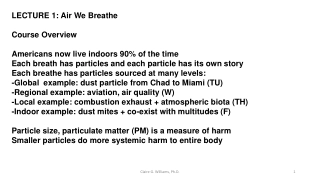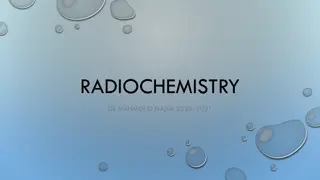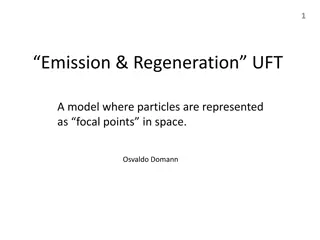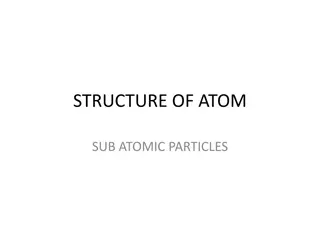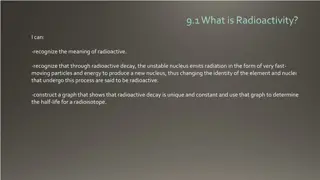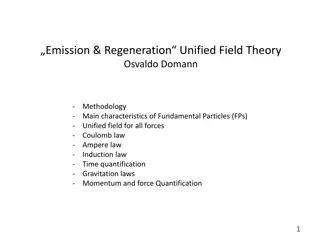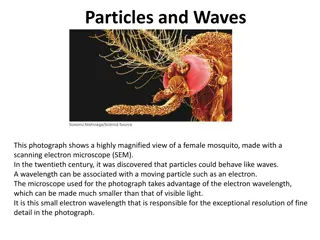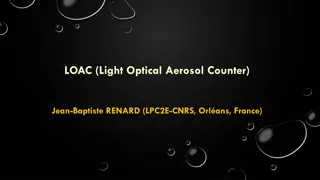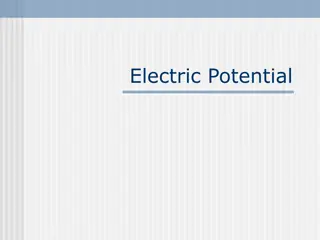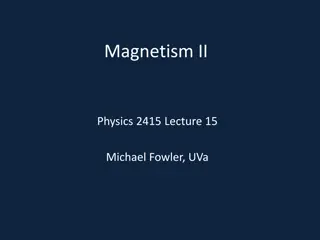Understanding Dynamics of Connected Particles in Physics
Delve into the world of connected particles in physics with a focus on tow bars, forces, and Newton's laws. Explore problems involving connected particles moving in the same direction and analyze scenarios like towing cars along a road. Gain insights into tension, accelerations, resistances, and forces acting on connected systems.
Download Presentation

Please find below an Image/Link to download the presentation.
The content on the website is provided AS IS for your information and personal use only. It may not be sold, licensed, or shared on other websites without obtaining consent from the author. Download presentation by click this link. If you encounter any issues during the download, it is possible that the publisher has removed the file from their server.
E N D
Presentation Transcript
Dynamics Connected particles Tow bars
Forces: Connected Particles KUS objectives BAT Set up a model of two connected particles with uniform tension on an inelastic string/cable Starter: What are Newtons three laws? A particle will remain at rest or will continue to move with constant velocity in a straight line unless acted on by a resultant force Every Action has an equal and opposite reaction The Force applied to a particle is proportional to the mass of the article and the The Force applied to a particle is proportional to the mass of the article and the acceleration produced acceleration produced F = ma F = ma
WB9Connected particles moving in the same direction Problems concerning connected particles moving in the same direction should usually be solved by considering the particles separately 5 3 g g Two particles P and Q, of masses 5kg and 3kg respectively, are connected by a light, inextensible string. Particle P is pulled by a horizontal force of 40N along a rough horizontal plane. The resistance forces are g and 3 P T T Q 40 3 kg 5 kg g 3 g 5 5 3 g g 5? respectively. Find the acceleration of each particle and the tension in the string = 40 8 (1) + (2) 8 g a For Q: 5 ( ) ( ) = -2 = = 140 (1) R 3 0 . ms (2sf) 3 3 8 T g a a g 5 8 5 = 3 + For P: = 3 T a g Sub in (1) (2sf) N 15 5 ( ) = R 40 5 (2) g T a
WB10 Tow bar WB10 A car of mass 1000 kg tows a caravan of mass 750 kg along a straight road. The engine of the car exerts a forward force of 2.5 kN The resistances to the motion of the car and caravan are each k their mass where k is a constant. Given that the car accelerates at 1 ms-2 find the Tension in the tow-bar. Draw a diagram
WB10 Tow bar = 1 a T T 2500 750 kg 1000 kg 750 k 1000 k For the car, 2500 1000k T = 1000 x1 T 750k = 750 x1 (1) (2) For the caravan, We have two equations with two unknowns Now solve simultaneously to get (1) + (2) 2500 -1750k k = 3/7 , T = 1071 3/7 = 1750
WB11 Tow bar at an angle 15 This figure shows a lorry of mass 1600 kg towing a car of mass 900 kg along a straight horizontal road. The two vehicles are joined by a light towbar which is at an angle of 15 to the road. The lorry and the car experience constant resistances to motion of magnitude 600 N and 300 N respectively. The lorry s engine produces a constant horizontal force on the lorry of magnitude 1500 N. Find (a) the acceleration of the lorry and the car, (b) the tension in the towbar.
WB11 Tow bar at an angle T T 1500 N 15 300 600 N N 1600 g 900 g (b) the tension in the towbar. Find (a) the acceleration of the lorry and the car, For the car, ( ) For the whole system, = 15 300 900 0 24 . R cos T ( ) ( )a = T = 534 (3sf) N 516 cos = + R 1500 300 600 900 1600 15 600 = = a 2500 24 . a 2 0 ms
WB11 Tow bar question taken further 15 When the speed of the vehicles is 6 m s 1, the towbar breaks. Assuming that the resistance to the motion of the car remains of constant magnitude 300 N, (c) find the distance moved by the car from the moment the towbar breaks to the moment when the car comes to rest. (d) State whether, when the towbar breaks, the normal reaction of the road on the car is increased, decreased or remains constant. Give a reason for your answer.
(c) find the distance moved by the car from the moment the towbar breaks to the moment when the car comes to rest. After towbar brakes, for the car: = 300 ( ) R = a -2 m s 1 3 900 T a -1 6ms T -2 1ms 15 3 ( ) s = + 2 2 2 = + 54 m 2 2 v u as 0 6 2 1 300 N 3 900 g = s = 36 3 2 (d) State whether, when the towbar breaks, the normal reaction of the road on the car is increased, decreased or remains constant. Give a reason for your answer. R Before After T The vertical component of T is no longer present, so the normal reaction increases 15 900 g
= tan 3 5 4 WB12 Tow bar on a slope 3 = = sin cos 3 5 4 5 4 A lorry of mass 900 kg is towing a trailer of mass 500 kg up an inclined road, at angle , where tan = .The two vehicles are joined by a light towbar . The lorry and the trailer experience constant resistances to motion of magnitude 1600 N and 600 N respectively. The lorry s engine produces a constant horizontal force on the lorry of magnitude 12000 N. Find (a) the acceleration of the lorry and car, (b) the tension in the towbar. a 12000 For the whole system: ( ) R = 12000 1568 = = a 2200 1400 1400 a 1400 sin g a T T 900 g -2 1. 12 ms 1600 For the trailer: ( ) R T = 600 = 500 N 500 sin T g a 500 g 600 4100
WB13 Tow bar - deceleration A lorry of mass 900 kg is towing a trailer of mass 300 kg along a straight road. The two vehicles are joined by a light towbar . Assume resistance forces are negligible. The driver sees a red light ahead and brakes causing a braking force of 2400 N. Find (a) the tension in the towbar, (b) the distance travelled before stopping For whole system: ( ) R a 2400 = = a 1200 -2 ms 2 a T T 2400 300 kg 900 kg For the trailer: ( ) R T T = 300 600 = 2 N When decelerating, the tow bar exerts a thrust on the car and trailer = + 2 2 2 v u as 202 = s = = 2 2 100 m 0 20 2 2 s 4
Skills J HWK J
BAT Set up a model of two connected particles with uniform tension on an inelastic string/cable KUS objectives self-assess One thing learned is One thing to improve is


